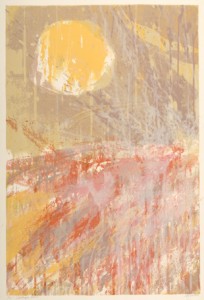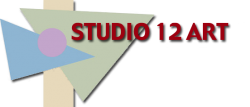
by Peter Keefer
I studied silk screen (with R A Raible, Jason Schoenerat), watercolor (with George Post) and oil painting (with Richard Diebenkorn) at the California College of Arts and Crafts in Oakland, California. Instruction in all three media taught me the use and control of transparent color overlays. Silk screen, having different overlays of color squeegeed on to the developing print in varying degrees of transparency, is the most similar in approach to my digital work.
Each selection made from the original image in the computer is moved and/or transformed before colors and transparency levels are chosen. The resultant layer is then rejected or retained according to its merits. Each layer leads to another decision as to what might occur in the next one. Every few layers the image gets saved as is, and additional work is done on a new copy. This leads to new challenges of density, value and clarity. If continuous layer work goes too far it is deleted and I go back to the previously saved version and continue working.
In silk screen, these challenges were met and renewed with each choice in the next printing layer; one had always to print enough of color #1 (and 1+2, 1+2+3, etc) to have enough rejects along the way if some colors didn’t work out as planned.
I think overcoming the challenges presented by the use of the computer is the basic innovation present in my digital work. Although the physical business of changing, printing and cleaning the silk screen for each color was difficult and time consuming, it was also extremely satisfying and enjoyable; all the processes were separate and defined, each one part of a job well done. More than a few times, though, I would wish that I had left a screen out, printed it less or more transparently, made a larger edition or some other change. With the computer, of course, such changes are easily made and incorporated in the finished image.
